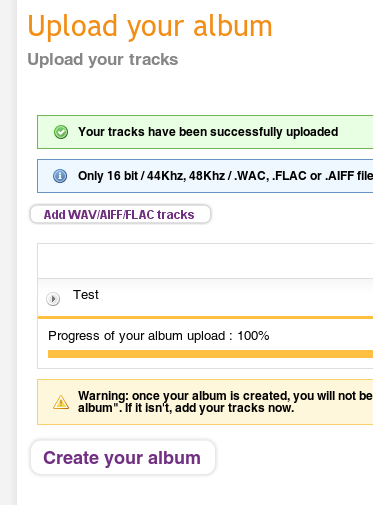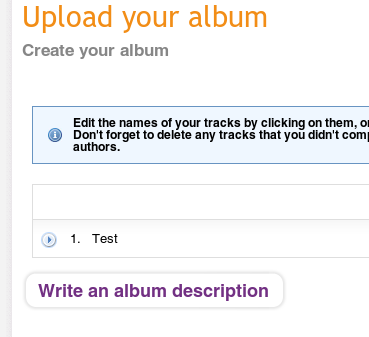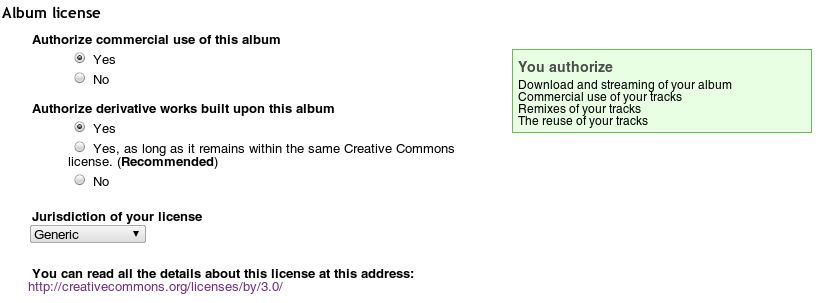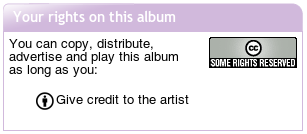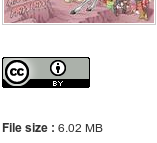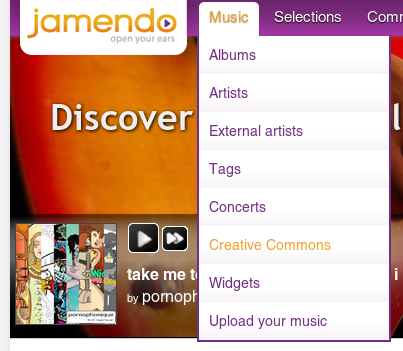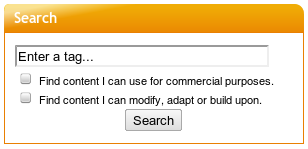Case Studies/Jamendo
More than a music sharing platform we are economically supporting and promoting the long tail of music. — Laurent Kratz, Jamendo’s CEO and Founder
Overview
Jamendo is a unique music platform aiming to assist artists ‘promote, publish, and be paid for’ their music. Founded in Luxembourg by free culture enthusiasts Sylvain Zimmer, Laurent Kratz and Pierre Gérard in May 2004, Jamendo has established a dedicated international community of followers. Utilising peer-to-peer distribution methods, such as BitTorrent and eMule, coupled with Creative Commons and Free Art licensing, Jamendo emphasises the legal distribution of content. Its business model is based on the concept that the wide dissemination of content across networks leads to popularity and prominence: ‘Be known and recognized. Spread your music worldwide.’
Jamendo is the first site to offer its contributors 50% of revenue gained from advertising. By registering for this optional programme, artists share in the site’s profits according to their page views. In addition, Jamendo offers the ability for users to donate directly to their favourite artists through a PayPal ‘tip jar’ facility. Artists receive close to 100% of moneys donated: a small administrative fee is deducted. This has been the first serious attempt of a file-sharing site to provide a direct way to compensate musicians for their work. Furthermore, by adopting Creative Commons, the site offers the possibility to distribute music freely, while preserving the basic rights of the artist.
As a portmanteau of ‘jam’ and ‘crescendo,’ the Jamendo platform unites:
- A legal framework to support artists, through Creative Commons and Free Art Licensing;
- An integrated rating and recommendation system adapted from iRATE, a collaborative filtering system for music;
- Free, simple, and quick access to music through tag searches;
- Use of common peer-to-peer technologies, such as BitTorrent and eMule for album download and content streaming;
- mp3 and Ogg Vorbis file formats;
- Mechanisms to make direct donations to the artists through PayPal.
Each artist is assigned a personal profile which includes links to their works including information about licensing, photos, event announcements, user-submitted reviews, and a discussion forum. As of 5 November, 2007, Jamendo hosted over 5000 albums and 336,000 artists:
| Available hours of music | 4592 |
| Number of album tracks | 70996 |
| Number of available albums | 5369 |
| Number of registered artists | 336914 |
| Number of registered members | 196851 |
| Number of known concert dates | 2905 |
| Total size of distributed files | 2.52 TB |
| Number of distributed files | 289418 |
| Finished BitTorrent downloads | 2310084 |
| Data transfered with BitTorrent | 106.74 TB |
| Number of available languages | 26 |
| Number of reviews | 54288 |
By 14 July 2008, Jamendo had significantly increased their offerings, in featuring 10443 albums, 62001 album reviews, and 370283 active members.
Jamendo emphasises that it is:
- A nonexclusive platform: the artist remains the owner of their music, which they are free to distribute by any other means at their disposal. Jamendo maintains a strong commitment to complementing traditional music distribution methods, such as CD sales.
- A zero-cost platform: Jamendo provides hosting for free. Site costs are kept low by using P2P distribution. Minimal advertising is included on the site and included in audio streams to raise revenue.
- A free platform: Artists reserve the right to remove their content from the site at any point, and are thus not prevented from signing exclusive contracts with record companies.
Jamendo is the first site to offer its contributors 50% of revenue gained from advertising. By registering for this optional programme, artists share in profits according to following formula: total page views per artist (across the album, lyrics, and review pages) divided by the number of page views of the artists registered to the programme. The artist will then earn 50% of the Jamendo shares. In addition, Jamendo offers the ability for users to donate directly to their favourite artists through a PayPal ‘tip jar’ facility. Artists receive close to 100% of moneys donated: a small administrative fee is deducted. This has been the first serious attempt of a file-sharing site to provide a direct way to compensate musicians for their work. The operation of this scheme is depicted below: http://mirrors.creativecommons.org/blimg/jamendo-revenue-share.png
Artists are encouraged to increase their revenue by:
- embedding the Jamendo Player featuring their album into blogs and websites;
- advertising the link to Jamendo on flyers, artists sites etc.;
- spreading the word about Jamendo: the more popular the site, the greater the hit count and thus the greater the revenue.
On 29 October 2007, economist Aaron Schiff from 26econ.com wrote on the progress of voluntary donations on Jamendo, providing statistics as follows, in addition to the Excel file of the data. This sits alongside Jamendo’s donation statistics.
On analysis, Schiff found that total donations were small:
- Jamendo currently claims about 69,000 songs are available for download… Over the 22 months there were 1,454 donations made, for a total value of US$21,150. So each artist is receiving very little money, if anything. Here’s the number and value of donations each month:
http://www.26econ.com/wp-content/uploads/2007/10/count.png
- Looking at the raw data, people generally make donations of round numbers, mostly multiples of 5 dollars or 5 Euros. There were a few odd donations though, like 5.99 or 6.49. The largest donation was about $204. The smallest was $5, which is the default minimum donation that the website suggests. Across all donations the average was $14.55. This graph shows the average and standard deviation of monthly donations across time:
http://www.26econ.com/wp-content/uploads/2007/10/mean1.png
- There’s a slight trend upwards over time in the average monthly donation, but a linear trend is not statistically significant. As you might expect, the distribution of donations (across all months) is skewed. Most donations cluster around relatively low values, but there are a number of higher donations. There were 12 donations of $100 or more. Here’s the histogram of all donations:
http://www.26econ.com/wp-content/uploads/2007/10/hist.png
Attracting VC funding in July 2007 from Luxembourg-based Mangrove Capital Partners, an early investor in Skype, Laurent Kratz, Jamendo’s CEO and Founder, stated:
- ‘With this funding, we plan to become the undisputed global player of free music. More than a music sharing platform we are economically supporting and promoting the long tail of music. We have a proven business model where music is not only proposed for free to end consumers but we are also closing an increasing number of partnership agreements and licensing deals.’
The lessons able to be learned from the Jamendo site by other online publishers (particularly e-book entrepreneurs, in this instance) have been summarised by Robert Nagle as follows:
- 1. There are many content creators willing to give their content away;
- 2. Tools for distributing, cataloguing, and rating this content are constantly improving;
- 3. The openness permitted by Creative Commons offers a way for independents to compete against various mainstream media operations;
- 4. Audio books can easily go the ‘way of Jamendo’, as has been demonstrated with podiobooks.com;
- 5. Although the site has yet to produce a lot of revenue, it does so without DRM. This may cause difficulties in verification.
Nagle concludes that ‘Jamendo is an inspiration for people in the content creation field regardless of genre.’
License Usage
Jamendo’s entire catalogue is available for free download, being licensed variously under Creative Commons or (less commonly) the Free Art Licence, the English-language version of the Licence Art Libre, a French copyleft licence applying to works of art.
Jamendo’s Creative Commons search interface presents thumbnails of the albums which fall into the six Creative Commons licences, clearly showing which albums are available for remix or commercial use. As of 7 November 2007, the distribution of licences was as follows:
| CC Attribution | 98 |
| CC Attribution-ShareAlike | 498 |
| CC Attribution-NonCommercial-ShareAlike | 2694 |
| CC Attribution-NonCommercial | 45 |
| CC Attribution-NoDerivatives | 87 |
| CC Attribution-NonCommercial-NoDerivatives | 1365 |
| CC SamplingPlus | 0 |
| CC NonCommercial-SamplingPlus | 419 |
| Free Art Licence | 229 |
As of 21 May 2008,
| CC Attribution | 196 |
| CC Attribution-ShareAlike | 1163 |
| CC Attribution-NonCommercial-ShareAlike | 4902 |
| CC Attribution-NonCommercial | 70 |
| CC Attribution-NoDerivatives | 167 |
| CC Attribution-NonCommercial-NoDerivatives | 2121 |
| CC SamplingPlus | 129 |
| CC NonCommercial-SamplingPlus | 262 |
| Free Art Licence | 222 |
Jamendo employs the ‘Jamloader’ tool for uploads, a GPL-licensed, Python-based open source software inspired by ccPublisher, as used at the Internet Archive . As with ccPublisher, this tool allows users to select an appropriate Creative Commons licence and to tag audio and video files with metadata through an administrative panel, as shown (explained here):
http://img.jamendo.com/help/artists_how/adminpanel.en.jpg
In addition, each artist’s profile clearly details their licence terms under the ‘Your rights on this album’ section, linking to the relevant Creative Commons deed.
Motivations
Jamendo allows artists to distribute their work across peer-to-peer networks via legally-recognised means. The site harnesses the power of the Internet for rapid recognition of talent, and rewards the artist for their work through fair compensation mechanisms. In adopting Creative Commons, the site offers the possibility to distribute music freely, while preserving the basic rights of the artist.
- ‘By authorising the free distribution of your album on these networks, you are helping to make Peer-to-Peer tools legitimate. And, your work will receive additional recognition and publicity due to the current media attention on the subject. You will be recognized as an artist with mature views on music distribution.’
Sylvain Zimmer comments about his platform’s choice of Creative Commons licence:
- ‘Jamendo's choice of Creative Commons as a licensing framework from day one was made because of 3 key points:
- The flexibility of the licenses that let the artist choose 'how free' they want their music to be.
- The clarity of the "human-readable" license page and the quality of the "machine-readable" and "lawyer-readable" license pages.
- Creative Commons is an organization supported by great individuals, a vibrant community and a tremendous growth rate worldwide.’
As to users’ individual motivations to license under CC, Dailymotion, a Paris-based video-sharing site, recently called upon Jamendo’s artists and users to provide testimonials and anecdotes of their experience with the site.
Technical Details
Jamendo has implemented 1) a license chooser; 2) the license mark on pages for CC licensed tracks and albums; 3) CC REL metadata; and 4) searching for CC licensed tracks.
License chooser
1. After registering an account, select Upload your album from the top menu, which will start the upload process. Upload your album's tracks. In the example below, a track named "Test" was uploaded.
2. Finish uploading your album's tracks, following all directions on the page. When done, continue to the Write an album description page.
3. At the bottom of this album description page, you should be able to select Creative Commons license options. Select your desired options and continue with the upload process.
License mark
The Creative Commons license mark appears on CC-licensed album pages in the right hand column along with explicit indicators of license restrictions.
For example, here is a CC license mark for a CC BY licensed album:
The license mark also appears on the Download page when downloading albums or individual tracks:
Metadata
Jamendo has implemented a subset of the CC REL specification by adding rel="license" tags into links to the CC license deeds. They chose to specify the cc namespace in the leading tag, but strictly speaking this isn't necessary; "license" in CC REL has been defined as equivalent to "license" in the xhtml vocabulary (which doesn't require an explicit inline namespace declaration).
For example, see the source to this page for a CC BY album:
<span xmlns:cc="http://creativecommons.org/ns#">
<div style='float:right;width:110px;margin:0px 0px 5px 5px;text-align:right;'>
<a rel='license' href='http://creativecommons.org/licenses/by/2.5/it/'>
<img src="http://cdn.imgjam.com/t/cc/somerights20.en_23241.png" alt="(cc)" onload="if ($PNGFIX) _pngfix(this)" />
</a>
</div>
You can copy, distribute, advertise and play this album as long as you:
<div class='spacer'> </div>
<ul style="list-style-type: none;margin-left:5px;"><li><table><tr><td valign="middle">
<a rel='license' href="http://creativecommons.org/licenses/by/2.5/it/" style="text-decoration:none;margin:2px;">
<img onload='if ($PNGFIX) _pngfix(this)' src="http://imgjam.com/cc/by18.png" style="border:none;height:18px;width:18px;"/>
</a>
</td>
<td valign="top" style='padding-top:1px;'>Give credit to the artist</td>
</tr>
</table>
</li>
</ul>
</span>
CC search
You can search and browse CC licensed works by going to the Creative Commons page.
You can access that page in the "Music" menu header:
On the CC page you can browse through albums with the various licenses or search for albums by tag with certain licenses using the search box:
Media
Delete this line and add text here.
Add media that is relevant.
